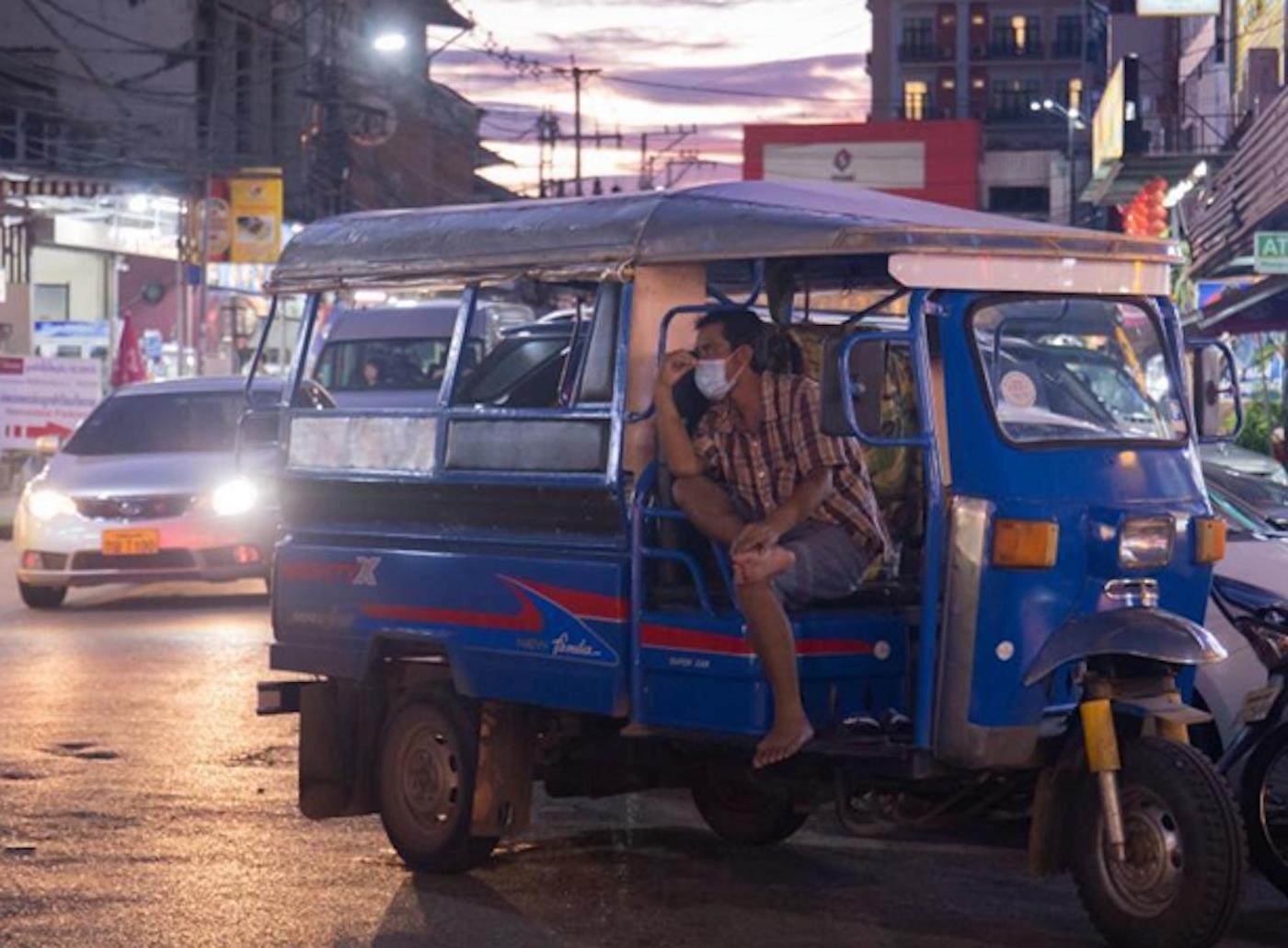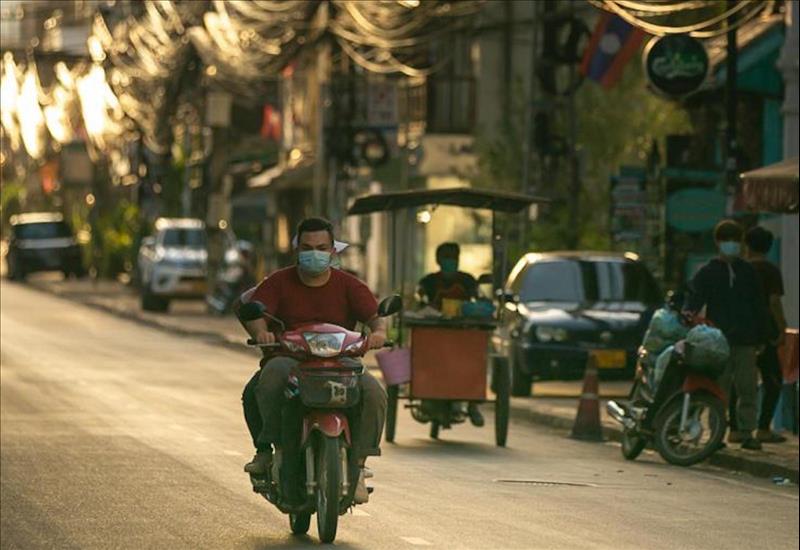
Covid crisis finally catches up with Laos
(MENAFN- Asia Times) Although most Southeast Asian countries have now seen their new daily infection rates fall since peaks in late August and early September, Laos' infection rate continues to climb.
Between the beginning of the pandemic and April 22 this year, when the numbers spiked, the landlocked state officially recorded only 94 infections.
But as of October 14, it had a new daily infection rate of 534, as a rolling seven-day average, compared with 197 on September 1.
In mid-September, the country's long-ruling communist government ordered many provinces to undergo strict lockdowns, including stay-at-home restrictions, until the end of the month.
Vientiane, the capital and epicenter of the country's infections, entered a full lockdown on September 19. Last week, the government said the majority of these lockdowns will be extended again until October 30.
Laos' porous borders and the high number of returning migrant workers from Thailand and Vietnam have weakened the authorities' ability to get a handle on the Covid-19 pandemic.
But Joe Rattanakhom, of the US-based Free Laos Campaign, blames the ongoing spike in infections on the government's alleged lack of preparedness, empathy for its citizens and engagement with the international community.
“The Lao government hasn't provided any support to its citizens in time of need,” he said.
The vast majority of direct cash relief for Laos' 7.2 million citizens has come from international aid agencies or foreign donors.
In April this year, laid-off or suspended workers were allowed to claim cash handouts from the state's Social Security Office, but it amounted to less than US$90 per person.
The government officially says it will pay for returning migrants to quarantine in state-run centers and provide Covid-19 vaccines for free, but reports on social media say citizens have had to pay for vaccines and their own meals in confinement centers, said Rattanakhom.
One source who requested anonymity due to concerns of official reprisals even alleged that paracetamol is the only medication being offered by some hospitals to people suffering from Covid-19.
“Go into hospital because you have severe Covid and the one thing they do for you is paracetamol. How curve-flattening is that?” the source said.
Adisorn Semyaem, a Laos expert at Chulalongkorn University's Institute of Asian Studies in Bangkok, Thailand, said the“most important limitation” is that the government has not provided direct financial assistance to those affected by the lockdown.

A tuk-tuk driver in Vientiane in a pandemic-era file photo. Image: Facebook
“Workers at shutdown factories had to help themselves without any assistance from the government. This is likely due to a shortage of government budget,” he added.
At the ruling Lao People's Revolutionary Party (LPRP) quinquennial Congress earlier this year, its newly-installed leadership team vowed to impose even more austerity measures, a regular promise made by Laos' senior officials since the beginning of the last decade.
Government expenditure as a percentage of gross domestic product was brought down from 24.9% in 2014 to 19.8% in 2019, according to official data.
But the country's outstanding debt, the majority of which is owed to China, has been an existential crisis for Laos in recent years.
In early August, Fitch Ratings credit agency reported that Laos' debt profile“remains challenging,” with the state needing to pay at least another $422 million in 2021 and an average of $1.16 billion each year between 2022 and 2025, a considerable rise on debt payments of past years.
Earlier this month, researchers at the US-based research lab AidData reported that Laos' so-called“hidden debt” to China could be as much as 35.4% of GDP, the majority stemming from the government's liabilities for the China-Laos railway mega-project, which some analysts reckon could be a massive flop when it opens later this year.
Prime Minister Phankham Viphavanh recently ordered stricter rules on how officials spend state money, a considerable increase in taxes and an economic shift towards producing more goods for export.
While this has been welcomed by the likes of the World Bank and International Monetary Fund (IMF), there are doubts about whether it can be achieved due to the structure of Laos' economy and the communist government's past failure of tackling the same problems, which have only been exacerbated by the Covid-19 pandemic.
“The risk of debt distress, a weak kip, and low government revenues continue to limit the government's options for reviving the economy,” Alex Kremer, the World Bank's country manager in Laos, said in a statement in August.
Last month, the Asian Development Bank downgraded its growth forecasts to 2.3%, compared with the 4% forecast it made earlier in 2021.
Cash-strapped authorities have been unable to provide much relief to citizens undergoing lockdown nor purchase Covid-19 vaccines, forcing them instead to rely on donations from China and other partners.

Laos will be hard-pressed to meet its external debt obligations. Photo: Facebook
As of October 13, around 42% of the population had received one Covid-19 jab and 32% had been fully vaccinated. The government reckons it can fully vaccinate half its population by the end of 2021, which now appears overly optimistic.
At the same time, communist authorities have had to grapple with growing public frustration, which in the past was typically put down swiftly through repression. Freedom House's annual studies have repeatedly placed Laos, a one-party state since 1975, as among the least-free countries in the world.
As the pandemic worsened last month, on September 19 Vientiane was put into a strict lockdown, with residents banned from leaving their homes or the capital. The bans have been enforced by police-controlled roadblocks.
“The government came out with a ferocious statement about how the restrictions had to be stiffened up considerably. The next morning, the roadblocks all went [up],” recalled a resident of Vientiane, who asked not to be named because of security concerns.
Moreover, Lao authorities said that anyone breaking the lockdown rules would be fined $297, about a tenth of annual income per capita.
“The news was that the people were not at all happy; they wanted to be able to go out and have a BeerLao,” the Vientiane resident said.“Most of all, the police refused to continue with the roadblocks” because they were worried about catching Covid-19.
As public anger grew, business organizations also began to express their frustrations since the full lockdown closed most factories and prevented workers from leaving their homes.
On October 7, the Lao National Chamber of Commerce and Industry, an employers' organization, wrote to the government to appeal for factories to be reopened as lockdown restrictions have badly hit economic activity.
The same day, the deputy mayor of Vientiane, Phouvong Vongkhamsao, told local media that most police checkpoints would be removed due to the number of people breaking the ban and because of the economic impact.
“We quickly saw the need to maintain a balance between controlling the Covid-19 outbreak and preventing economic collapse,” he reportedly said.
It appears that this is now the delicate balance Lao officials are trying to strike.
When lockdowns were extended last week, Thippakone Chanthavongsa, a government spokesperson and minister to the Prime Minister's Office, was quoted as saying:“there is a need for balance between public health measures, administrative measures, and economic measures.”
“The LPRP doesn't give a tuppenny damn about its reputation. But it seems that, this time, the people have really got their rag out. No BeerLao! No parties,” said the Vientiane resident.

A woman wearing a face mask amid concerns about the spread of the Covid-19 coronavirus waits to cross the street in Vientiane on March 11, 2020. Photo: AFP/ Mladen Antonov
However, none of the sources who spoke to Asia Times reckon the growing public frustration over the government's pandemic response will have long-term impacts on the stability of the ruling communist party.
“Covid-19 is unlikely to have a political impact on the LPRP,” said Adisorn.
Compared with the past, the government's communication has been more open and transparent, some analysts say. And its traditional repressive control of mass communication, including social media, has also helped to quell most expressions of public frustration.
“The Lao people are resilient and will survive with or without the Lao communist government's assistance,” Rattanakhom said.

Legal Disclaimer:
MENAFN provides the
information “as is” without warranty of any kind. We do not accept
any responsibility or liability for the accuracy, content, images,
videos, licenses, completeness, legality, or reliability of the information
contained in this article. If you have any complaints or copyright
issues related to this article, kindly contact the provider above.


















Comments
No comment